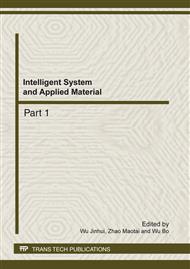p.251
p.256
p.262
p.267
p.272
p.277
p.282
p.287
p.293
Power Optimizing of Solar Photovoltaic Systems
Abstract:
Efficient energy yield is a major concern in solar photovoltaic (PV) systems. This paper describes a distributed control system to optimize the power output of the PV systems. The PV systems contain many PV modules. And every PV module has a monitoring and control network node. The communication data are successfully transmitted using a low-cost ZigBee wireless network. The field conditions are monitored by voltage, current, irradiance, and temperature sensors. The power operating point tracking is implemented at the PV module level. The reference voltage is calculated based on a neural network model, which is used to identify maximum power point. And the output voltage is regulated by a digital controller in the integrated converter according to the reference voltage. Experiments show that the power output can be greatly increased with this distributed control system under many shadow conditions.
Info:
Periodical:
Pages:
272-276
Citation:
Online since:
February 2012
Authors:
Price:
Сopyright:
© 2012 Trans Tech Publications Ltd. All Rights Reserved
Share:
Citation:



